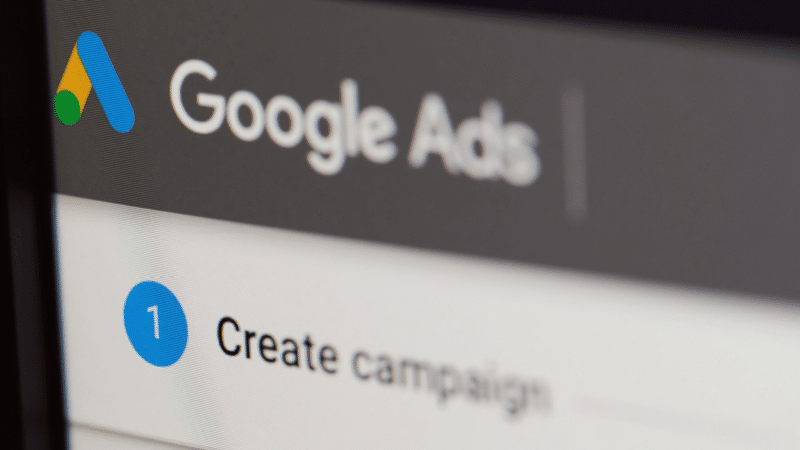#Creating Google Ads campaigns with Gemini conversational AI: How good is it really?

Table of Contents
Learn about Gemini AI’s capabilities and limitations, plus how to effectively use it for Google Search and Performance Max campaigns.
- “The conversational experience workflow is designed to help you build better Search campaigns through a chat-based experience,” says the article by Shashi Thakur, Google Ads Vice President and General Manager (Search Ads & Ads on Google Experiences).
- “It combines your expertise with Google AI. All you need to start is your website URL and Google AI will help you create optimized Search campaigns by generating relevant ad content, including creatives and keywords.”
While the AI model is not without criticism, here’s my take on Gemini after field testing its capabilities. This article covers:
- How Gemini functions in Google Ads.
- My takeaways after testing it.
- How to make the most of these for your campaigns.
- Capabilities unique to Performance Max.
- Review of Google Product Studio in Shopify.
How to build Google Ads campaigns with Gemini for Search
To use Gemini for Search, follow the standard process of building a new campaign. After choosing your goals and setting up the campaign logistics, a new chat experience will pop up on the screen where you create ads.
At this point, you give Gemini a link to your website so it can pull information for its first iteration, ask for help creating your ad and basically build a full Search campaign using just the URL that you provided – keywords, ads, extensions, images, etc.
Normally, you have to fill all this out manually. But all that heavy lifting is done with Gemini populating each field for you based on relevant inputs. You then begin work with a draft rather than an empty screen.
As with all AI technology, there are positives and negatives. Working with Gemini comes with certain tradeoffs.
Gemini for Search: Who it’s for and who will benefit most
I want everything at my agency to be done in the best way to generate meaningful leads for clients. To that end, I can say that most Google Ads agencies and marketers may not benefit tremendously from this early iteration of Gemini.
The target group for this feature is likely your average Google Ads advertiser – someone like a generalist who runs ads as part of a wider role or a small business owner who’s never done this before – rather than the deep specialist.
Gemini makes it incredibly easy for them to create campaigns and get started, while specialist media buyers and performance marketers would rather build on its output than publish it as is.
In short, today’s Gemini is built for those who lack deep Google Ads experience but still stand to gain from advertising to an online audience.
Gemini fills out many elements they may not be familiar with: keywords, ads, URLs, extensions and so on. It does that first leg on its own and presents it for review so that even less-than-savvy advertisers can make edits.
Typically, these smaller advertisers will have a website before they come to Google Ads. The fact that Gemini uses that asset to generate its suggestions can be good if the site is written well and structured clearly.
They’ll still need to review keywords, have a great landing page and tweak proposed ad copy – but it will be easier and faster than working from scratch.
Savvy advertisers can benefit from Gemini as well, though to a lower degree given how thorough we typically are and how much we review things before publishing them.
You really do need to tweak the output – sometimes considerably – but by filling it all out for you, Gemini gives you ideas to edit and will save time over working from a blank slate.
Rather than being copywriters, Gemini makes us copy editors. You might take half the keyword ideas it provides and build on them by giving Gemini specific requirements for new headlines and descriptions.
And because it’s all happening in the Google Ads interface, you can ensure character limits and other mandates are respected.
But the bottom line: Don’t just grab the output and launch. Treat it as the first step and come away to analyze:
- What can you tweak?
- What do you like?
- What should you explore further?
Limitations of the current model of Gemini
I’ve played with Gemini on a few different campaigns now. I often see weird outputs, particularly if the website isn’t great and it doesn’t have a good input to work with.
Unfortunately, I did not see the ability to create a second ad group using Gemini while preparing for this article. This may not be the worst for newer advertisers with just a couple of products or offers.
I hope the inability to make a second ad group with Gemini is a bug rather than a feature.
Even with good input, some of Gemini’s suggestions do not make sense. For example, one of the headlines I got while testing out an insurance website was “Hard Driving Insurance.”
Fortunately, because it throws a lot of ideas out and you can give it feedback, there were decent options to iterate on. Ask Gemini to generate more headlines and it’ll give you more options until you’re happy.
Like any AI, you have to review the output.
Images are usually pulled from the website, so you’ll find this aspect more appealing if the site includes a rich library of quality images. The Performance Max iteration of Gemini includes an image generation tool, which I wish the Search version also featured.
What I don’t love is how Gemini seems to prefer links from the site footer for sitelink extensions. Typically, you want to include sitelinks to what will push the sale or close a deal. We also try very hard to always fill in the descriptions and Gemini does not seem to do that.
Hopefully, Google will resolve these soon because, as it stands, you will get sitelinks but not in the best way.
Bottom line: This is early-stage, high-potential AI tech
I think the important thing to recognize is that this is not yet cutting-edge technology, but more like where Performance Max was three years ago.
Compare that to where Performance Max is today and what we’re looking at with Gemini is closer to the alpha or beta. This will likely evolve into something better, so get ahead of it and get comfortable with it.
For better or worse, it won’t do your job for you, so don’t expect it to. But it will make things a lot easier as it gets better. I imagine that it’ll be nearly seamless to build campaigns with Gemini at some point in the coming years.
I would also love for Gemini to show some forecasting data. For keywords, it provides the basics (e.g., how many impressions you might get on a monthly basis).
But if you go to Keyword Planner and enter the same keyword, you get much more helpful data. It would be interesting to see if Google chooses to incorporate this.
Gemini use case: Why fundamentals still matter
Gemini or no Gemini, to get the best possible outcomes for the brands you work with, you still need to know the fundamentals of the business:
- Who are the customers?
- What are the pain points?
- How do people go through the buying journey?
Knowing this makes campaign management easier, including working with a model like Gemini. Recently, I asked it to create a campaign for one of my clients who does addiction treatment and recovery.
Gemini did a decent job of pulling the right information from the website (which is as solid as possible). It immediately understood the brand’s tone and what information was important.
But there were naturally parts of the output that I chose to change. For this specific client, instead of a transactional call to action like “Schedule an appointment,” I made it sound more helpful (e.g., “Get the support you need” or “Start the recovery process”).
Gemini’s output was functional, but it took human oversight to align with the advertising brand.
Another thing I changed were the sitelinks. Typically, for people who are not convinced to click on the ad, we try to include copy like “We accept your insurance” (link to insurance page) or “Chat with somebody now” (link to live support).
Gemini was not as relevant or varied in its choices, instead outputting common options like “See resources” or “Contact us.”
While it’s a must to review and tweak output from AI, without that fundamental knowledge of what my client wants to say and do – not just ROAS targets, but brand values – I would not have known how to level up Gemini’s output.
What I did find interesting was that Google gives you a couple of prompt options. In one, I asked Gemini how to create more compelling ads. It provided decent if common advice, which could be great for the beginner users who will flock to it.
How Gemini works in Performance Max
Inside Performance Max, when you go into an asset group, Gemini can now generate images to populate your creative assets. Enter a prompt and Gemini will automatically create that image for you – sort of like what Midjourney and Dall-E do, but for free.
To find this setting:
- Navigate to the desired campaign.
- Select your asset group.
- Choose Edit your assets.
Here, you can generate headlines, descriptions and images.
It’s important to note that this version of Gemini seems to have a lot of policy and legalese layered on top of it, which you don’t have in the standard model. Many prompts return an error message when your request conflicts with permissible norms.
I played around with it a fair bit and it’s clear there are some things they don’t want you to generate, so you have to be careful with your prompts.
When it comes to lead generation, advertisers should find image generation more straightforward.
If I sell trucking insurance, I can show a truck on a freeway (but can’t ask for a logo to be placed on the truck).
I don’t need to spring for the photoshoot if I just want to show a conceptual image. Gemini will create one I can now use in my lead-gen Performance Max campaign or maybe even add to a Search campaign as an image extension.
You have the right to use these AI-generated images, so small businesses can do so without worry. Gemini in Performance Max also doesn’t seem to want to show people and faces, in addition to logos and other brand marks.
Perhaps this is because it’s located within the ad creation flow because using Gemini outside of Google Ads lets you do those things. It would be helpful for this functionality to be common to both experiences.
One other challenge with Gemini is the fluctuating bias of its output.
Media coverage indicates that the team responsible for training Gemini is still working to strike a balance where it can accurately portray accurate, realistic imagery that doesn’t reflect the bias of a particular group or demographic.
The final difference is the Search component. If you try to generate headlines and descriptions, you’ll find they’re separate tools instead of conversational flows.
Provide input – like a series of bullet points – and Gemini will generate assets that just take what you say and tweak it slightly. It’s not fantastic output, but it gives you ideas to edit and work with.
The one thing I do love is that if you have an existing Performance Max campaign, Gemini will look at your existing data and, without any input, provide new options for ad text.
Product Studio: AI visuals with product imagery
From what I can tell, you can’t use Gemini-generated images for ecommerce Performance Max, where typically you want to show your own products. At this time, it doesn’t seem possible to create an image using your own product; the model has only been trained to generate assets.
One interesting workaround is Product Studio – a Google-built product that, unlike Gemini, lives in Shopify and can only be accessed from a Shopify store. I expected something like this to be in the Merchant Center, so it was surprising to find it only in the Google app for Shopify.
If you have a simple product image, like a black hat on a white background, you can use this to spruce it up:
- Select a product from Shopify.
- Tell the AI what it is (e.g., black trucker hat).
- Select your desired output:
- Remove the background.
- Upscale the image.
- Generate scenes.
It actually does a pretty good job of cutting out the product from the white background. I’ve even done it with a white t-shirt on a white background, which made it near-pixel perfect.
Remember that Product Studio is in its early stages and mostly built on presets, so you must work through different prompts to get what you want.
Even with current limitations, it can generate ideas that a designer can act on. And for smaller advertisers who may not have the resources for photoshoots or other imagery, it will allow them to get started.
You can save output to your Shopify store or export and use it wherever you want, such as Facebook, Instagram and Google Ads.
All signs point to Gemini improving exponentially
Gemini has been in the news quite a bit lately, and much of it is criticized. Since I don’t have an engineering background, I try not to opine on the language models and the technology behind these tools.
Instead, my focus is on their application within advertising: how to best use these tools to make our jobs easier and better while still exercising caution and discretion. I did it with Smart Bidding and Performance Max, and I continue to do so with generative AI, Gemini and Demand Gen campaigns.
Given just how much Performance Max has improved since its initial release, I’m confident that Gemini will continue to improve rapidly.
As I’ve always said (and continue to maintain), we can either embrace this technology or get left behind. Depending on where you manage paid media, it can make a significant difference in your career:
- If your career trajectory is in-house, adapting means building job security into your skillset.
- If you work primarily in agency settings, it will be required as you manage more accounts with the same expected quality of output.
- For agency owners, it also includes your fiduciary obligations to clients.
These tools will get better. It’s up to us to be ready to hit the ground running when that day arrives.
If you liked the article, do not forget to share it with your friends. Follow us on Google News too, click on the star and choose us from your favorites.
If you want to read more like this article, you can visit our Technology category.




